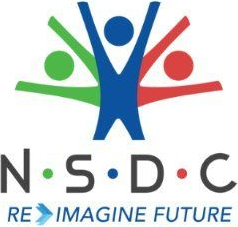How AI is Reshaping Qualitative Research

Qualitative research, the careful, intensely-human practice of unraveling detail and feeling from the unruly, unforgiving and unwieldy world of interview and unedited survey commentary data in an effort to unearth the intangible concept of ‘why’ is often regarded as a minefield, laden with challenges and a heightened need for rigour. Artificial Intelligence (AI) and Large Language Models (LLMs) are, however, creeping near the shores of this craft as a rising tide, ready to change everything about it.
The Siren Song of Efficiency
The lure of AI in qualitative analysis is too irresistible to deny. Consider the hours lost reading verbatim answers, manually relabelling them and hunting down themes using repetitive, highly subjective, human indexing. For companies overwhelmed by customer feedback or comments in an employee survey, this tedious task often results in swathes of unused information, escaping even basic scrutiny.
Enter machine learning. Thematic codes can be predicted using systems trained on human-coded data such as via the BERT architecture, limiting the amount of work involved in qualitative data analysis drastically. Research has proved that human coders consider the review and adjudication of AI-predicted codes to be far “easier and more effective” compared with regular coding. It is more than just time-saving; it is speed-to-insight that enables acting on findings much faster.
Consider how useful in real-time it would be to see new areas of customer pain or changes in the overall morale of employees among thousands of responses. The major advantage of AI in this regard is the consistency achieved across datasets to alleviate human fatigue, coder variation and intercoder reliability, magnifying qualitative depth of the analysis that was previously possible in only resource-rich projects.
The Interpretivist Dilemma
But as every experienced critical thinker understands, each technology innovation comes with a trade-off. Qualitative research is based on the interpretivism approach that agrees with the vision a perception is subjective, plural and socially constructed. The main tool of such interpretation is the researcher, a product of experience, based on all their preconceived notions and experiences. The focus of qualitative analysis is the examination of the validity of those relations, things or statements that are connected to the lived experience of the participants – not just one single truth.
This is a psychological starting point, in which AI finds itself in a prickly situation. In this paradigm, it is difficult to succeed when programs work on a set of deterministic rules and formulae. There are fears that AI can miss the fine points of human communication, would simplify complicated feelings and emotions, or could hallucinate false or misleading data. Also, culturally-misaligned analysis can often arise from biases in big data on which the models are trained. To numerous qualitative researchers, and particularly those working in R1 institutions, this conflict is all but tangible: they are much less relaxed with having AI do all the coding, extract conclusions, or even produce write-ups, because they are afraid of losing the essential human component.
LLM-in-the-Loop
A very promising space seems to be a hybrid approach, also called LLM-in-the-loop or human-in-the-loop. This paradigm presupposes thinking about AI as a well-meaning and hard-working assistant, albeit not always an impeccable one. As an example, a BERT-based model can predict codes which are adjudicated carefully by human coders. It is a workflow of human-AI partnership in thematic analysis where promising outcomes are achieved, resulting in high-quality code assorted to that of two human coders in fewer time and labor requirements.
In such a case, AI does the heavy lifting, like generating predictions or extracting initial codes and converting them into a binary classification. Nevertheless, the human maintains the decisive role of review and optimization to eliminate false positives or negatives, clarify ambiguities, and ensure granular accuracy. This back and forth interaction between human and machine assists in defining the codebook more and provides further interpretation. Although over 80% correctness of LLMs have been achieved in a single experiment on occupational coding in Swahili, for example, they cannot go without human control, especially in case of short, ambiguous or context-sensitive answers that would be resolved by a human interviewer during their conversation.
Ethical Minefields
The immediately practical advantages should not, however, obscure the extant ethical dilemmas. The very operational model of AI – consuming vast amounts of data for its “learning and development” – raises profound questions about informed consent and data privacy. Should potentially identifying interview data be fed to an AI system in its raw form? How did the researchers manage this when setting out the consent forms initially? The right to be informed and even the right to forget something are complicated or even impossible, once the data has been integrated into the deep learning mechanisms of an AI system.
Besides, future researchers run the risk of being ‘deskilled’. When the qualitative scholars of tomorrow are consistently using AI to code, how will they ever come to have the acculturated sensibilities of interpretation that characterize the very basis of the subject?
The Way Ahead
Human or machine is not a simple choice in the future of qualitative inquiry. It is about a slow, gradual integration, which may result in the emergence of a new “computational paradigm”. This would combine both quantitative as well as qualitative aspects and would use AI on large-scale pattern recognition and initial analysis but maintain strict onus on the human researcher to provide contextual understanding and completion of interpretation, as well as ethical monitoring.
This requires a refilled commitment to reflexivity, not only on the bias of the researcher, but on the biases of algorithms themselves – “a component of the knowledge-making process can be algorithmically-aided, in addition to human interpretation and analysis”. This is not to say qualitative research should be reproduced only quantitatively, sharply contrary to its interpretivism background. Rather, it is about increasing trustworthiness by introducing new kinds of triangulation as AI shows us what human beings miss, but leaving in the hands of humans ultimate interpretive authority with access to the context, irony, and the deep, frequently self-contradictory, tapestry of human experience.
Read: Singh, T., & Kumar, H. (2025, July 10). AI in qualitative research: Using large language models to code survey responses in native languages. International Food Policy Research Institute (IFPRI).


